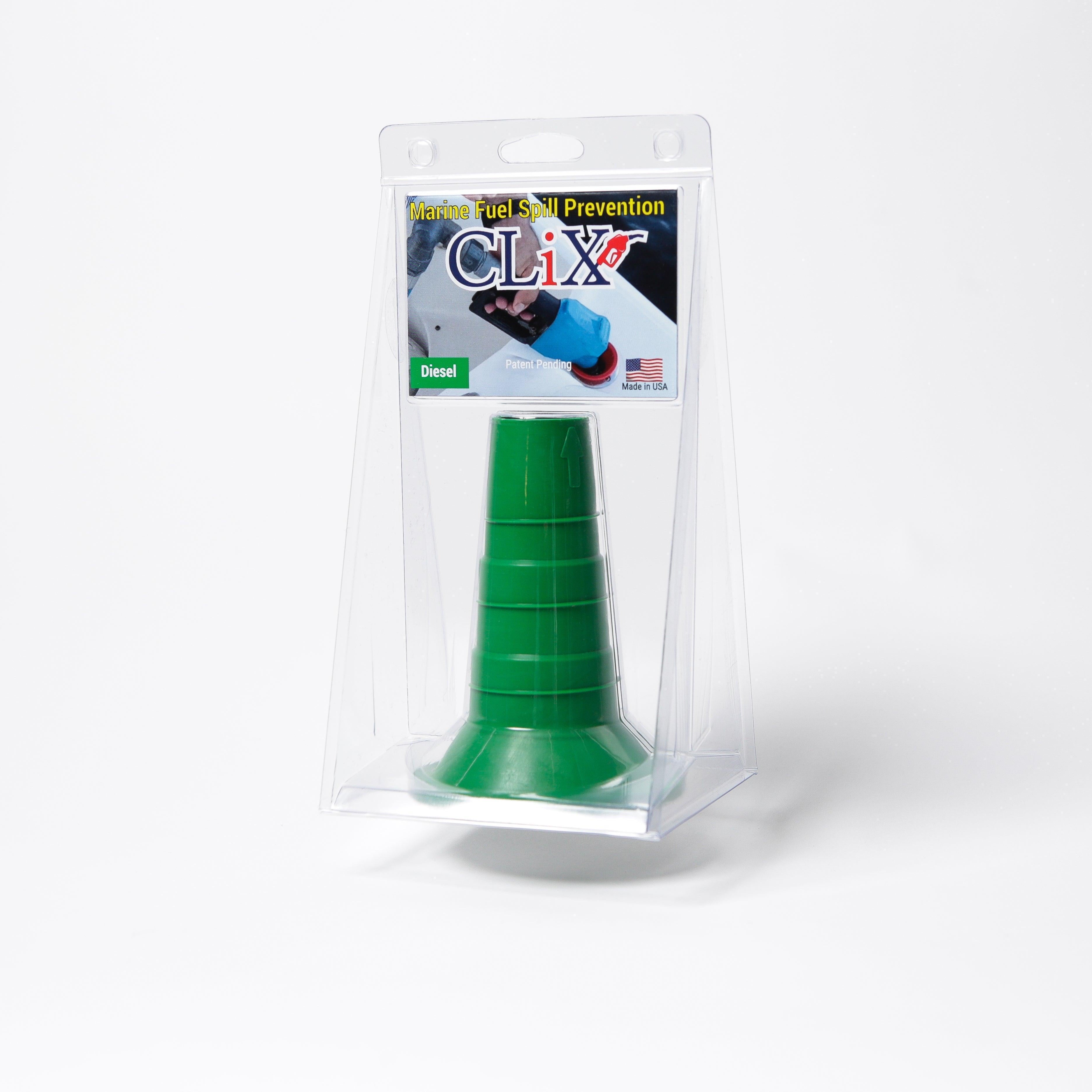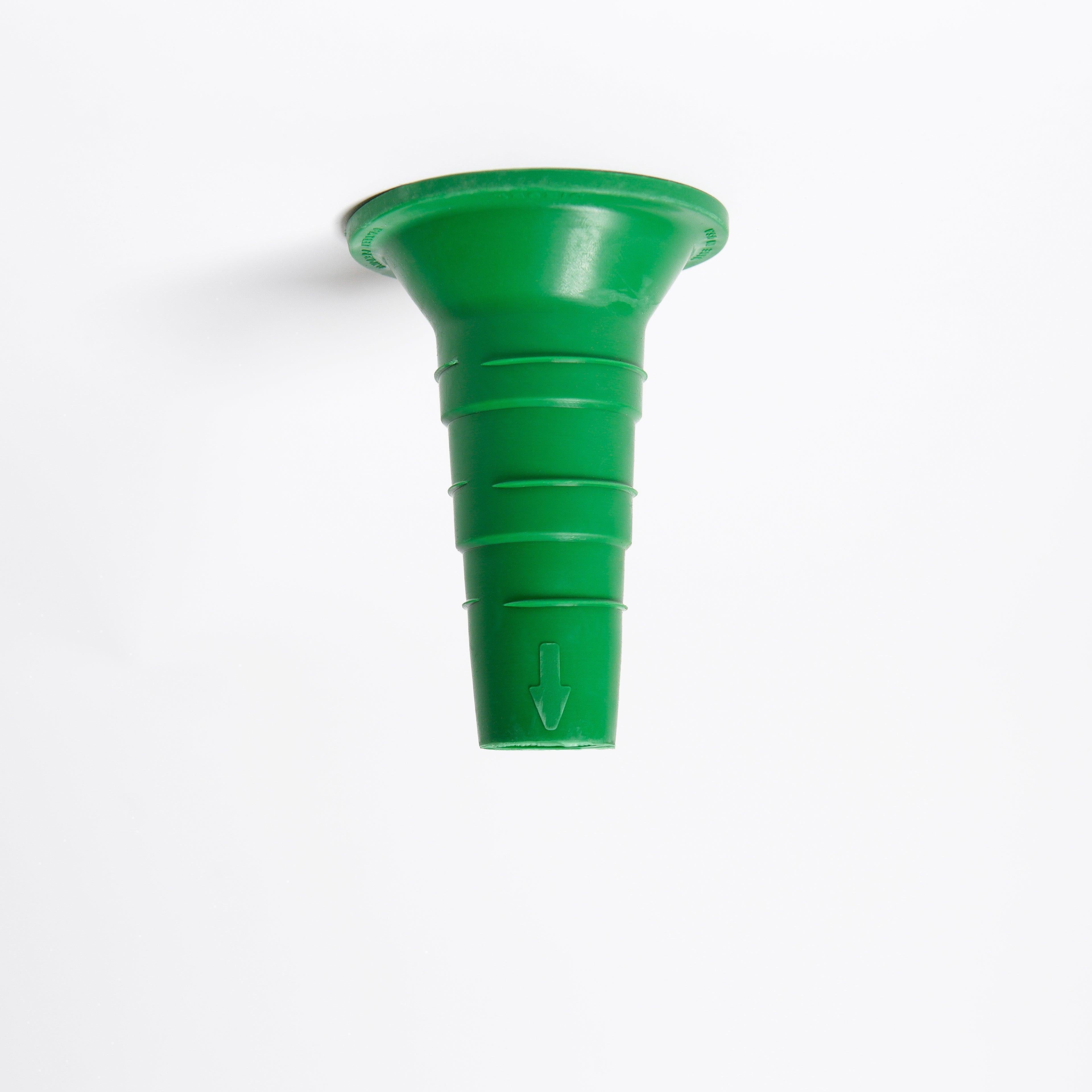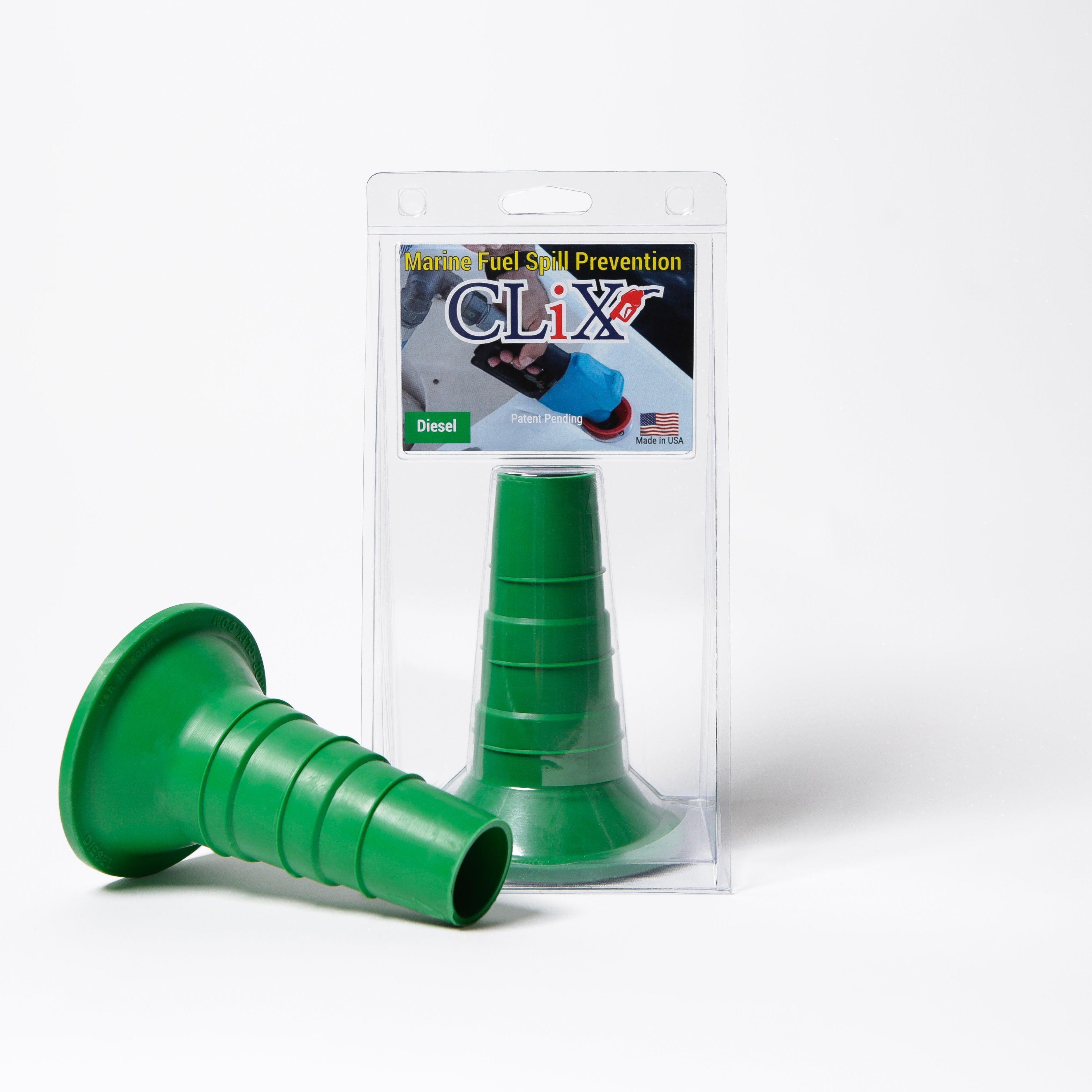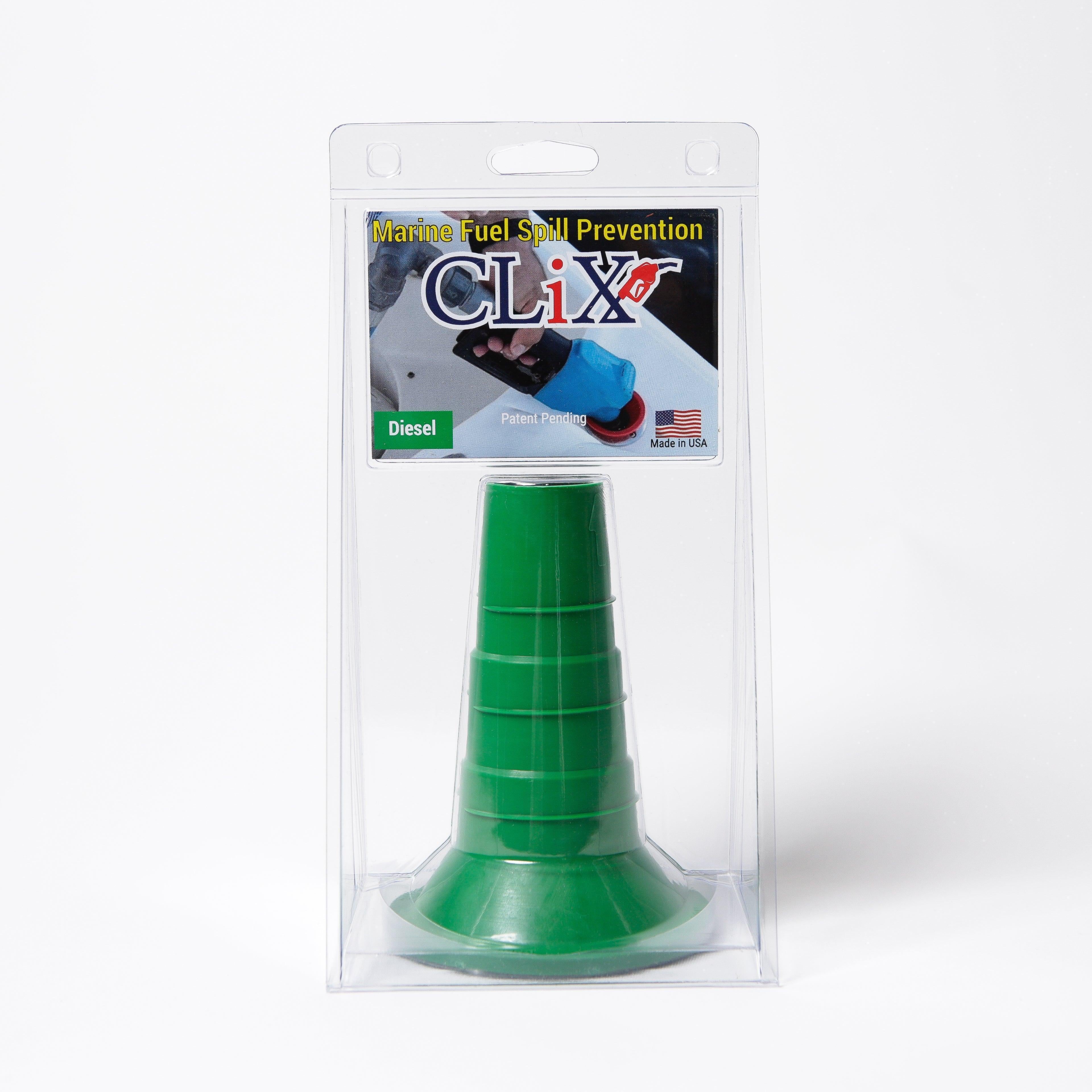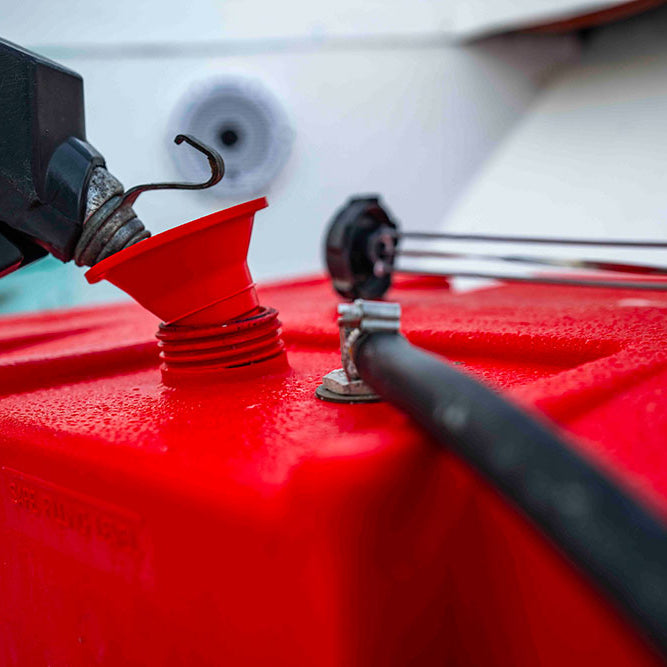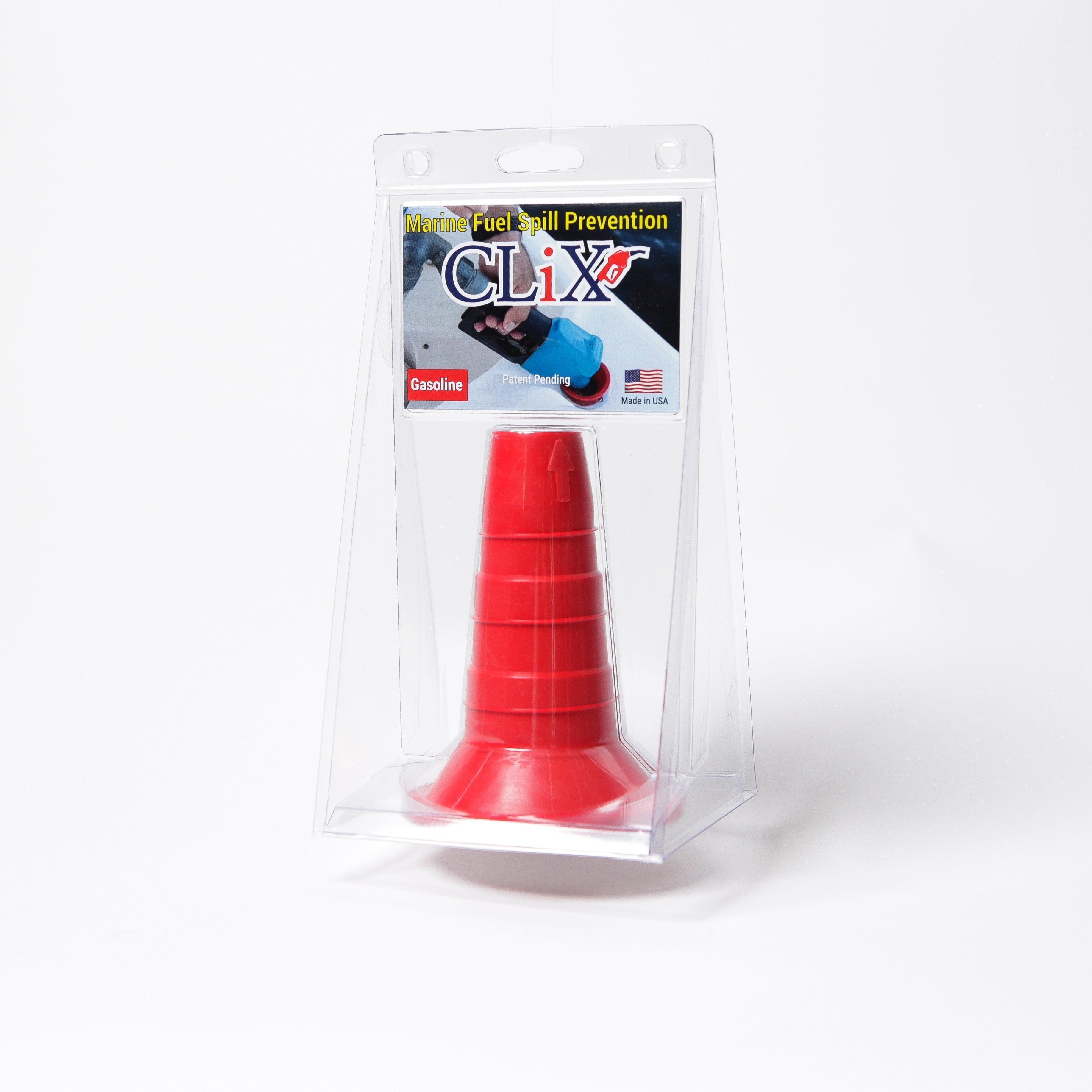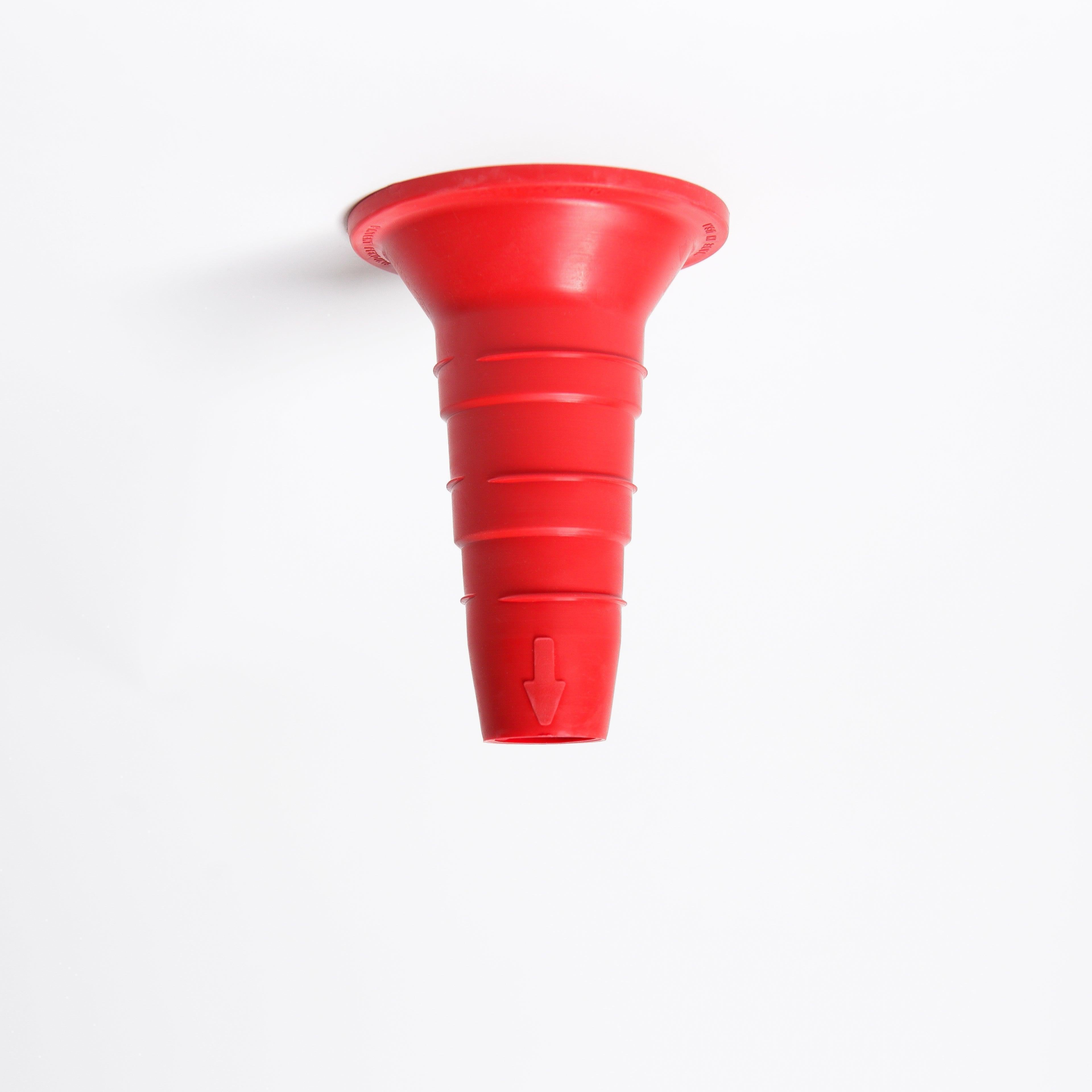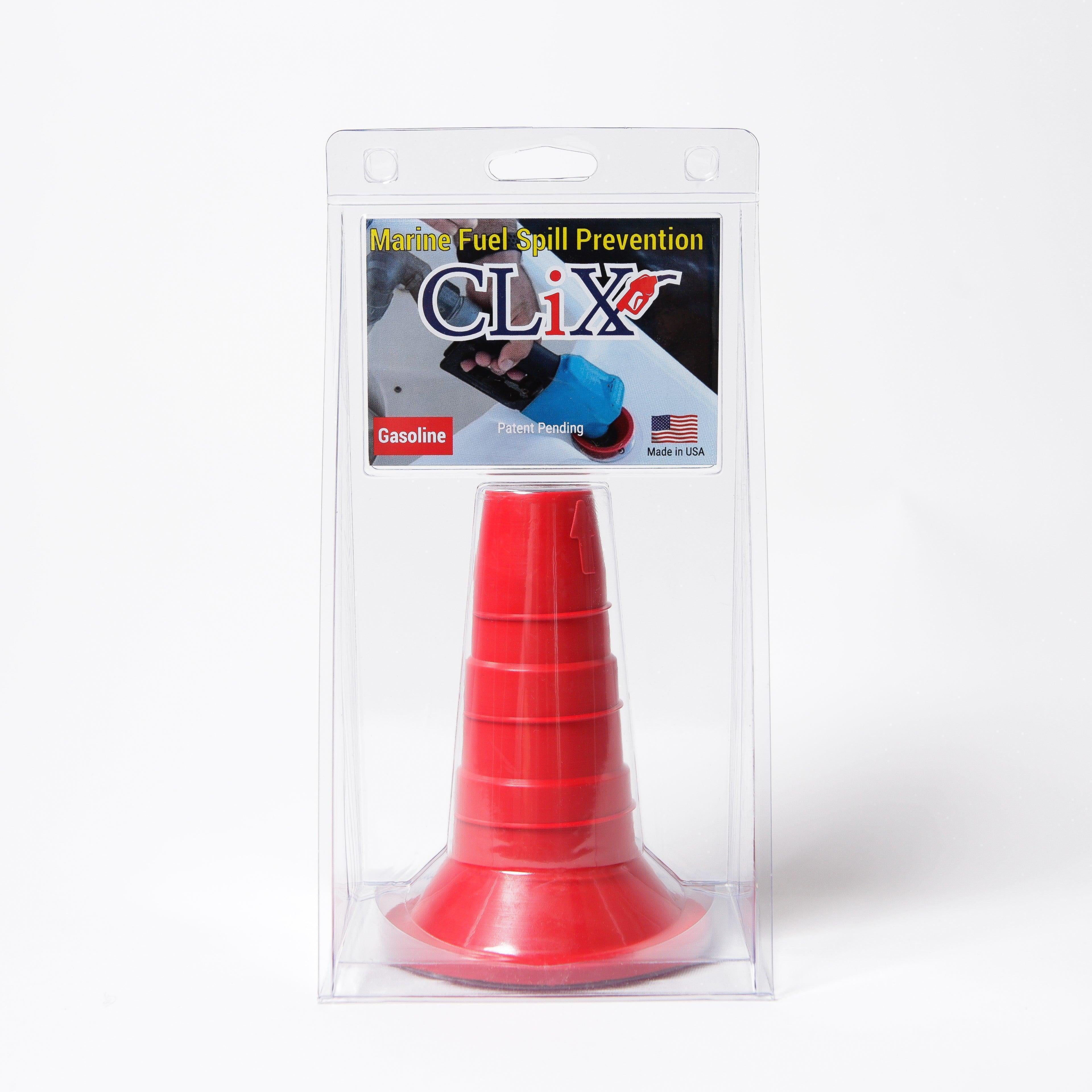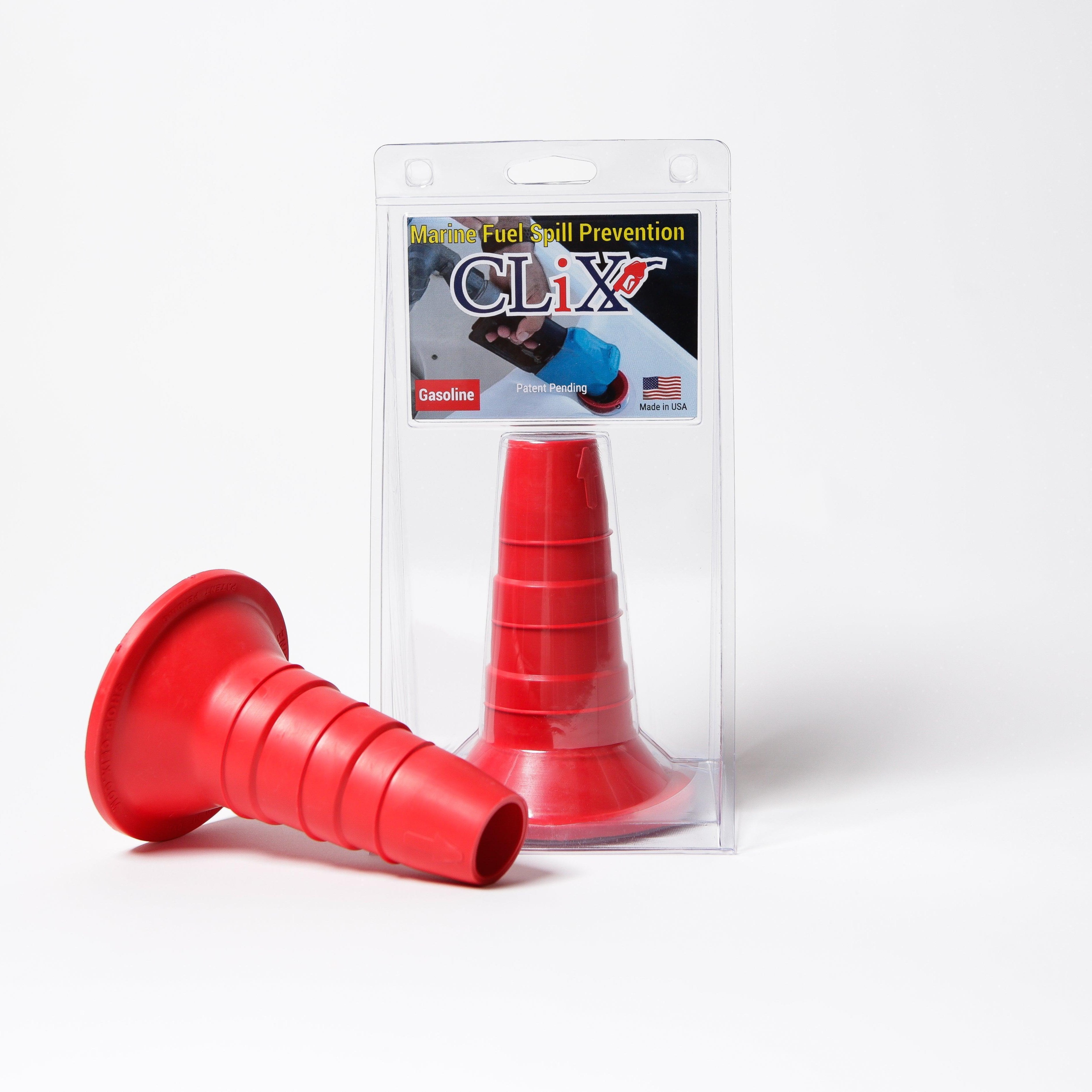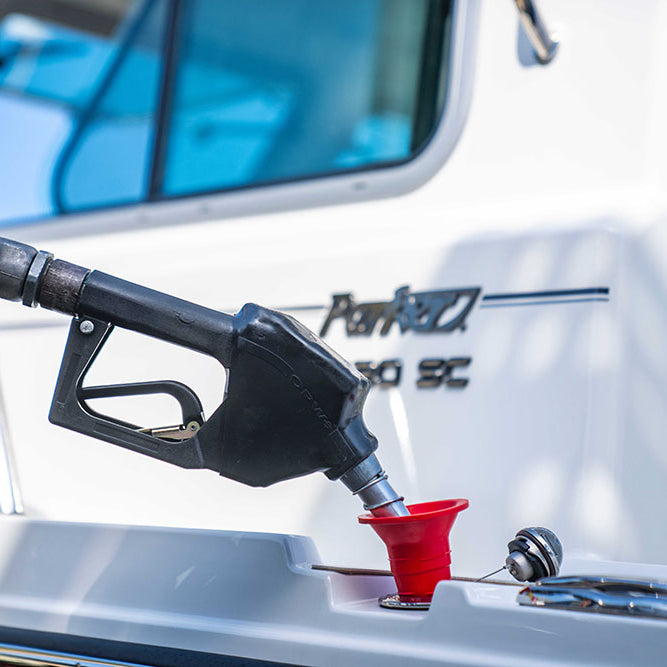The Hidden Reality Behind Boat Fuel Cost
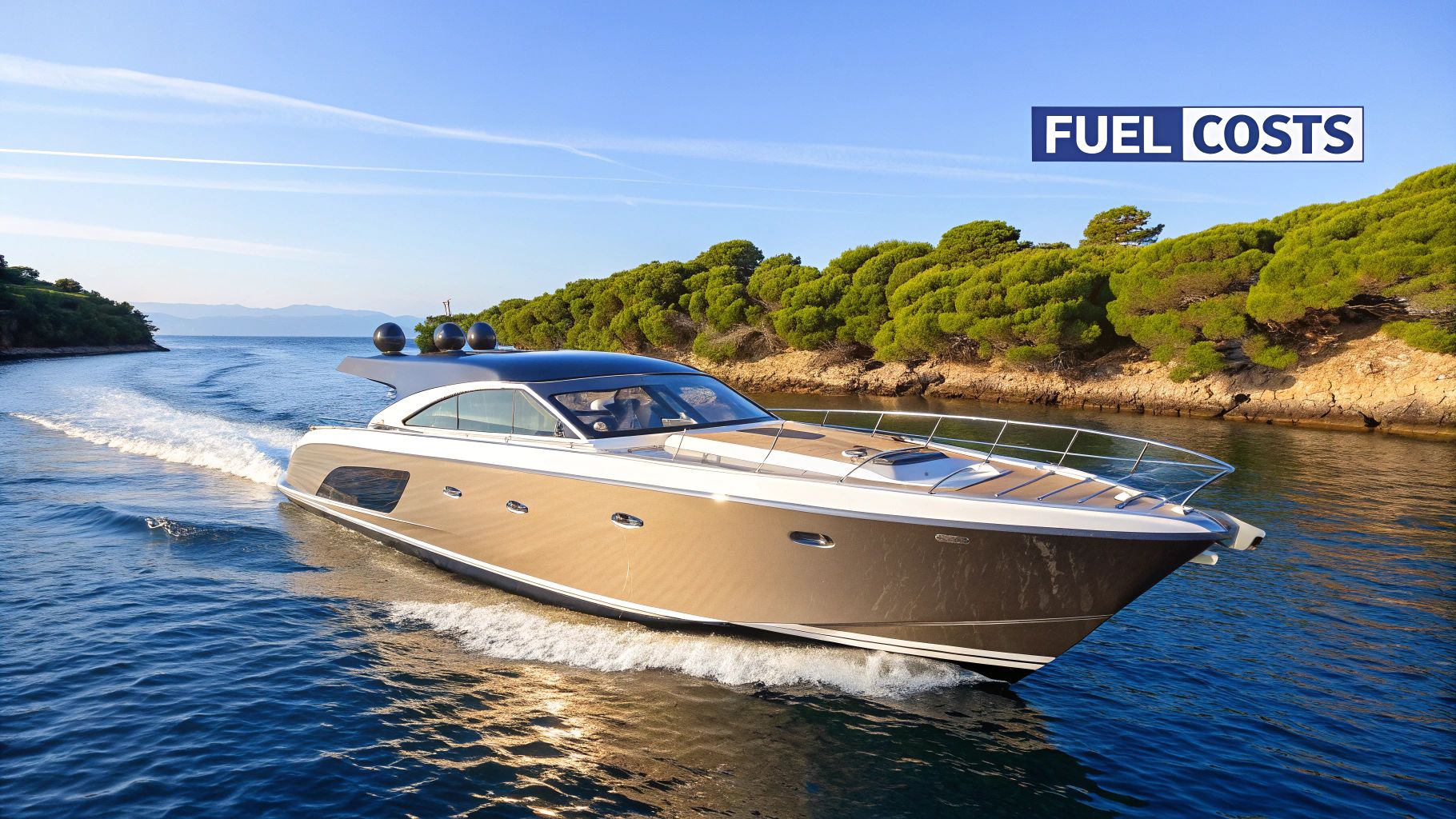 For many new boat owners, the first visit to the marina fuel dock is a jarring experience. The price per gallon isn’t just slightly higher than at a roadside gas station; it can be 50% to 100% more expensive. This sticker shock isn't a sign of corporate greed but a lesson in marine economics. Understanding why a high boat fuel cost is normal is the first step toward managing it. Unlike your local gas station, marinas have unique logistical and operational expenses that are passed on to the customer.
For many new boat owners, the first visit to the marina fuel dock is a jarring experience. The price per gallon isn’t just slightly higher than at a roadside gas station; it can be 50% to 100% more expensive. This sticker shock isn't a sign of corporate greed but a lesson in marine economics. Understanding why a high boat fuel cost is normal is the first step toward managing it. Unlike your local gas station, marinas have unique logistical and operational expenses that are passed on to the customer.
This price difference is created by a mix of factors that establish a separate pricing world on the water. Think of it like buying a bottle of water at a remote hiking outpost versus a supermarket. The product is the same, but the cost to get it there is vastly different. Marinas deal with specialized delivery logistics, strict environmental rules for their storage tanks, and the expense of maintaining dockside infrastructure.
Why Marina Fuel Is a Different Beast
Several key elements contribute to the premium you pay at the pump:
- Location and Convenience Premiums: Marinas are often situated in prime, high-value real estate areas. You're paying for the convenience of fueling up directly on the water, which saves you the trouble of hauling fuel cans.
- Seasonal Demand: Boating is a highly seasonal activity. Marinas must earn enough revenue during peak months to cover their year-round operating costs, which results in higher prices in the summer.
- Marine-Grade Fuel and Additives: Marine fuel often includes specific additives to fight moisture and prevent engine problems common in humid, water-based environments. These special blends come with a higher price tag.
The Broader Economic Picture
The recreational boating market is just one piece of a massive global industry. With over 80% of the world's trade volume moved by sea, marine fuel is the lifeblood of global commerce. This huge demand affects the entire supply chain, contributing to a global marine fuel market projected to grow from about $140.6 billion in 2025 to $171.5 billion by 2030. For a closer look at these market forces, you can explore the full research on the global marine fuel market.
This context helps clarify why fuel often accounts for 40-60% of a boater’s total operating expenses—a reality that catches many newcomers by surprise.
Decoding What Makes Your Boat Drink Fuel
Think of your boat's fuel consumption like a complex recipe. Every ingredient counts, and even small adjustments can significantly change the outcome. Understanding the main factors that drive your boat fuel cost is the first step toward managing it. Why does a 28-foot express cruiser sometimes burn 40 gallons per hour (GPH), while a center console of a similar size might only use 20 GPH? The answer is a mix of design, condition, and how you operate it.
The biggest single factor in a boat's fuel thirst is its hull design. This dictates how efficiently it glides through the water. It’s like the difference between trying to run a race wearing a parachute versus aerodynamic athletic gear. A displacement hull, often found on trawlers, is built to push water aside. This provides excellent stability but limits speed and fuel efficiency. On the other hand, a planing hull, common on most recreational powerboats, is shaped to lift up and skim across the water's surface at speed, which greatly reduces drag and improves fuel economy once "on plane."
The Hidden Drags on Your Wallet
Beyond its basic shape, the condition of your hull plays a huge part. Marine life like algae and barnacles are always looking for a place to call home, and your boat's bottom is prime real estate. This buildup, known as fouling, creates a surprising amount of friction. A dirty hull can increase hydrodynamic drag so much that it causes fuel consumption to jump by as much as 25-40%. Keeping your hull clean with regular scrubbing and good antifouling paint is one of the smartest ways to lower your fuel bills.
Another crucial, yet often forgotten, element is the propeller. The right prop is perfectly matched to your boat's weight, hull, and engine, allowing it to work at its best. Using the wrong size or pitch is like driving your car everywhere in second gear—it makes the engine work harder and waste fuel. Even minor damage, like a small dent from hitting something underwater, can disrupt its balance and harm your fuel economy.
How You Use Your Boat Matters
Finally, your own habits have a direct effect on the fuel gauge. The way you load your boat affects its center of gravity and how it sits in the water, which in turn influences its ability to plane correctly. A boat that isn't trimmed properly will plow through the water, fighting itself and burning extra fuel.
To help you see how these factors translate into real-world numbers, the table below provides some benchmark fuel consumption rates for different boat types. It shows how much fuel you can expect to burn per hour at both a steady cruising speed and when pushing the engine to its limits.
| Boat Type | Engine Size (HP) | Cruising GPH | Wide Open Throttle GPH | Typical Cost per Hour |
|---|---|---|---|---|
| Pontoon Boat | 90 HP | 2.5 GPH | 8 GPH | $12.50 - $40.00 |
| Center Console | 200 HP (Single) | 10 GPH | 20 GPH | $50.00 - $100.00 |
| Deck Boat | 250 HP | 11 GPH | 23 GPH | $55.00 - $115.00 |
| Express Cruiser | 350 HP (Twin) | 22 GPH | 40 GPH | $110.00 - $200.00 |
| Sportfishing Yacht | 1,000 HP (Twin) | 35 GPH | 100+ GPH | $175.00 - $500.00+ |
| Note: Costs are estimated based on an average fuel price of $5.00/gallon and will vary. |
As the table illustrates, the jump from cruising speed to wide-open throttle more than doubles fuel burn in most cases. This highlights how your operational choices, like the activities you engage in, can dramatically change your daily fuel expenses.
- Trolling: This slow-speed activity is generally very light on fuel.
- Watersports: Tubing or water skiing involves frequent power changes and high-throttle pulls, which consumes fuel rapidly.
- Cruising: Finding your boat’s “sweet spot”—the ideal cruising speed where the engine runs most efficiently—can slash fuel use compared to running at full throttle.
Mastering Your Boat Fuel Cost Calculations
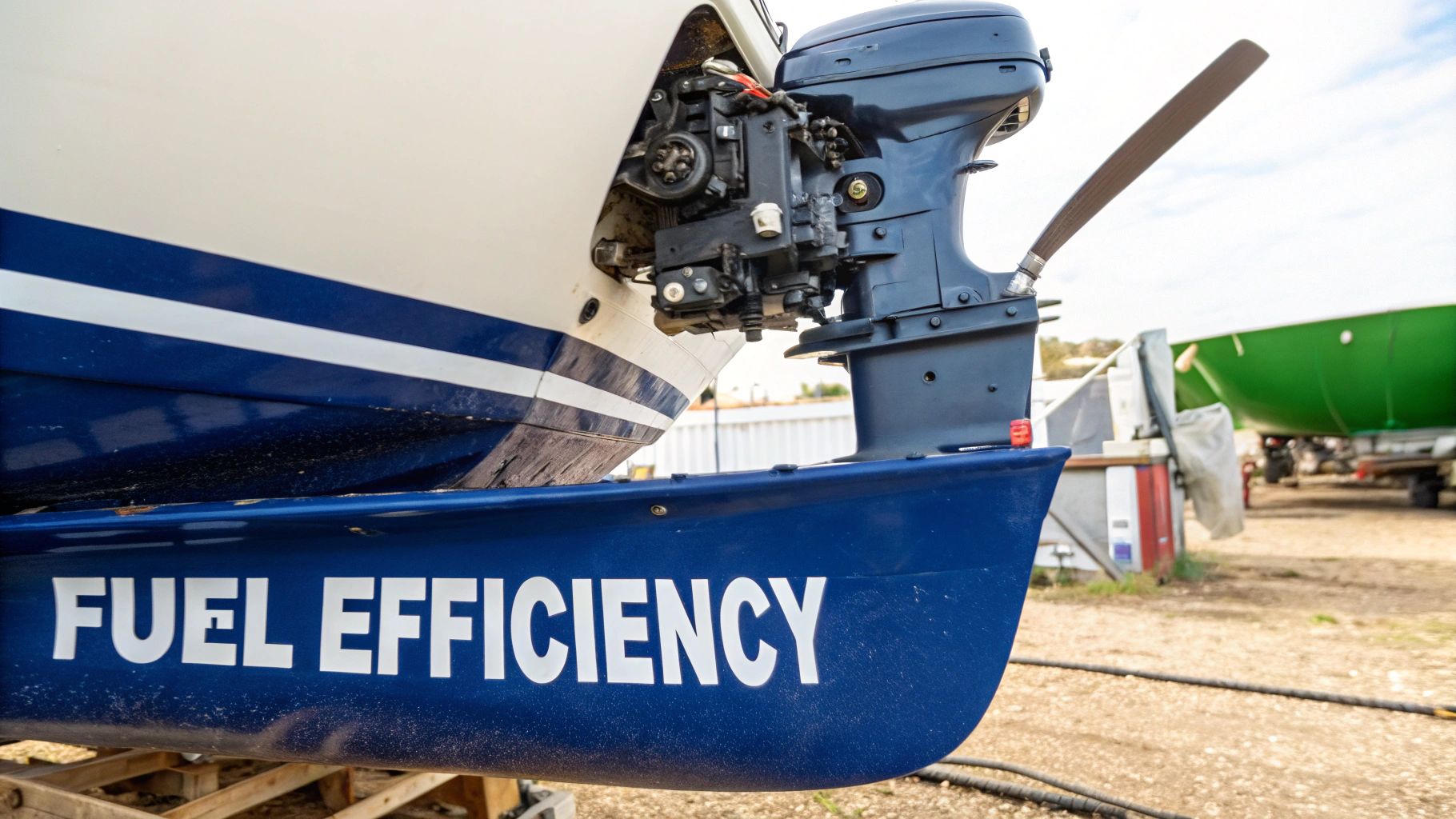 To truly get a handle on your boat fuel cost, it's time to move past guesswork and casual marina talk. Accurately predicting your expenses requires solid data, not just a hunch. Fortunately, experienced boaters use several proven methods to track their real-world consumption with precision, changing how they budget for every trip. These techniques range from simple, manual calculations to advanced digital tools that give you real-time feedback on your boat’s performance.
To truly get a handle on your boat fuel cost, it's time to move past guesswork and casual marina talk. Accurately predicting your expenses requires solid data, not just a hunch. Fortunately, experienced boaters use several proven methods to track their real-world consumption with precision, changing how they budget for every trip. These techniques range from simple, manual calculations to advanced digital tools that give you real-time feedback on your boat’s performance.
Foundational Calculation Methods
The most direct approach is the “full tank method.” This classic technique doesn't require any special equipment—just your trip log and fuel receipts. It’s a simple but effective way to establish a baseline for your boat’s fuel appetite.
Here’s the process:
- Fill your tank completely and note the engine hours from your hour meter.
- Enjoy your time on the water as you normally would for several hours.
- Head back to the fuel dock and refill the tank completely once more.
- Record the total gallons you added and the new engine hours.
By dividing the gallons used by the hours your engine ran, you calculate your average gallons per hour (GPH). Doing this over time provides a reliable number for planning future outings. If you'd like a more detailed look at this and other methods, you might be interested in our expert guide on calculating boat fuel consumption.
Embracing Modern Technology
While manual tracking is a great starting point, modern fuel flow monitors offer a remarkable level of insight. These digital gauges are installed directly into your fuel line, giving you an immediate readout of your fuel burn rate. This real-time data is incredibly useful for finding your boat’s “sweet spot”—its most efficient cruising speed. You can instantly see how small throttle adjustments translate into significant savings.
Understanding your own consumption is also important in the context of the wider energy market. As of April 2025, global consumption of liquid fuels, including marine types, was around 102.57 million barrels per day. Even as the automotive world shifts toward electric options, marine fuel demand holds steady, highlighting the value of efficiency on the water. You can discover more insights about global liquid fuel consumption from Statista.com.
By combining proven calculation methods with modern tech, you can budget for any adventure with confidence.
Battle-Tested Strategies for Slashing Fuel Expenses
Knowing your fuel burn rate is the first step, but actively reducing it is where you'll see real savings. With a few proven techniques, many boaters can cut their boat fuel cost by 20% to 40% without giving up time on the water. These aren't complicated secrets—just practical adjustments to your maintenance and operating habits that seasoned captains rely on. It all begins with making your boat as efficient as possible before you even cast off the lines.
Optimize Your Vessel's Performance
Think of your boat like an athlete; it performs best when it's in top condition. When it comes to fuel savings from maintenance, two areas deliver the biggest returns: the hull and the engine.
- A Clean Hull is a Fast Hull: Marine growth, such as algae and barnacles, creates a surprising amount of drag. This friction makes your engine work much harder to maintain speed, which burns more fuel. A hull covered in growth can increase consumption by as much as 40%. Regular cleaning and a quality antifouling paint are among the smartest investments you can make for fuel efficiency.
- Engine Tuning is Essential: An engine that isn't running at its best is an engine that's wasting fuel. Regular tune-ups—which include checking spark plugs, changing filters, and using the right oil—ensure it operates as the manufacturer intended. A well-maintained engine can improve your fuel economy by up to 20%.
The infographic below illustrates how these straightforward maintenance tasks translate directly into lower fuel bills.
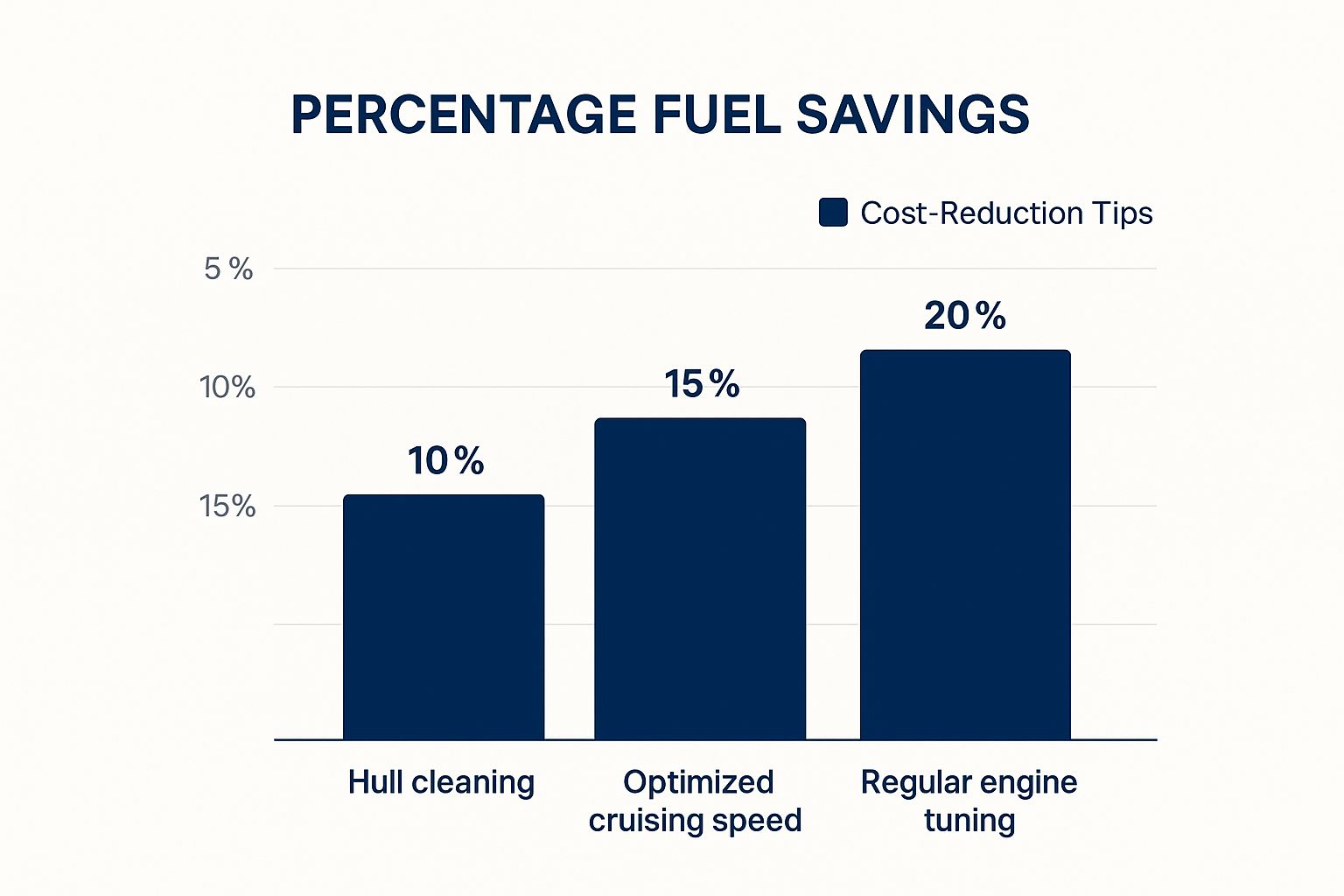
The data here clearly shows that keeping your engine tuned provides the greatest potential for fuel savings, with finding the right cruising speed and maintaining a clean hull following closely behind.
Cruise Smarter, Not Harder
Once your boat is in prime condition, how you operate it becomes the next biggest factor. Jamming the throttle forward is almost never the most efficient way to get from point A to point B.
Every boat has a "sweet spot"—a specific RPM range where it's fully on plane, and the engine is running with the least amount of strain. Finding this ideal speed can cut your fuel use by 15% or more compared to running at full throttle. You can pinpoint this efficient cruising speed by using a fuel flow monitor or by doing some manual calculations over a few trips.
To help you decide which strategies are worth your time and money, here is a breakdown of common fuel-saving tactics.
Fuel-Saving Strategies and Their Impact
Comprehensive breakdown of efficiency strategies showing potential fuel savings and implementation difficulty
| Strategy | Potential Savings (%) | Implementation Cost | Difficulty Level | Payback Period |
|---|---|---|---|---|
| Clean Hull & Prop | 10% - 40% | Low-Medium | Medium | 1-2 Seasons |
| Engine Tune-Up | 15% - 20% | Low-Medium | Low (if hired) | 1 Season |
| Find Sweet Spot | 10% - 15% | None | Low | Immediate |
| Reduce Weight | 5% - 10% | None | Low | Immediate |
| Plan Routes | 5% - 15% | None | Low | Immediate |
| Use Trim Tabs | 5% - 10% | Low-Medium | Medium | 1-2 Seasons |
This table shows that some of the most effective strategies, like finding your boat's sweet spot and reducing unnecessary weight, cost nothing to implement and offer immediate returns.
Furthermore, planning your route can lead to unexpected savings. Try to work with nature, not against it. Use your GPS and weather apps to look at current and wind forecasts before you head out. Riding with a current instead of fighting it is like getting a free push, extending your range on every single gallon of fuel. For more advanced techniques, you can explore our guide on expert marine fuel management strategies.
By combining a well-maintained boat with smart operating habits, you can take firm control of your fuel budget, spending less time at the pump and more time enjoying the water.
Smart Boat Fuel Cost Budgeting That Actually Works
One of the most frequent questions we hear from boaters is, "Am I spending too much on fuel?" The truth is, there's no single "normal" amount. It’s far more useful to think about practical benchmarks rather than chasing a universal number. For instance, a small bass boat enjoying a lake outing might use around $75 in fuel. In sharp contrast, a 40-foot luxury cruiser exploring a popular coastline could easily burn through $500 or more in a single day.
Effective budgeting isn't about getting lost in complicated spreadsheets that you abandon after one trip. It’s about creating simple, realistic formulas that fit your specific boating habits. This means understanding which factors have the biggest impact on your fuel expenses.
Location-Based Budgeting
Where you boat can be just as important as what you boat. Fueling up at a quiet, remote cove is almost always going to be cheaper than at a busy marina in a prime tourist spot. During peak season, these popular locations often charge premium prices that can double your expected fuel costs.
A smart approach involves researching fuel prices in your planned cruising areas before you cast off. You might decide to top off your tanks at a less expensive marina before venturing into a pricier region. Keeping your tank in good shape is also key for both safety and efficiency, as a well-maintained system helps avoid expensive problems down the line. You can check out our guide on boat fuel tank safety and maintenance for essential tips.
Seasonal and Emergency Planning
Your fuel budget shouldn't be a rigid, year-round number. A practical strategy is to budget seasonally, knowing that your summer expenses will naturally be higher than in the spring or fall. It's also a good idea to create an emergency fund specifically for fuel. This cushion ensures that a sudden price hike or a longer-than-expected journey doesn't sink your entire boating season.
This forward-thinking approach to managing expenses is gaining serious traction in the marine industry. In fact, the market for marine fuel optimization tools is projected to grow from $12.01 billion in 2024 to $13.75 billion in 2025—an impressive growth rate of 14.5%. This signals a clear industry-wide move toward smarter fuel management to cut costs. You can read the full research about marine fuel optimization to see how the industry is adapting.
Technology That Actually Reduces Your Fuel Bills
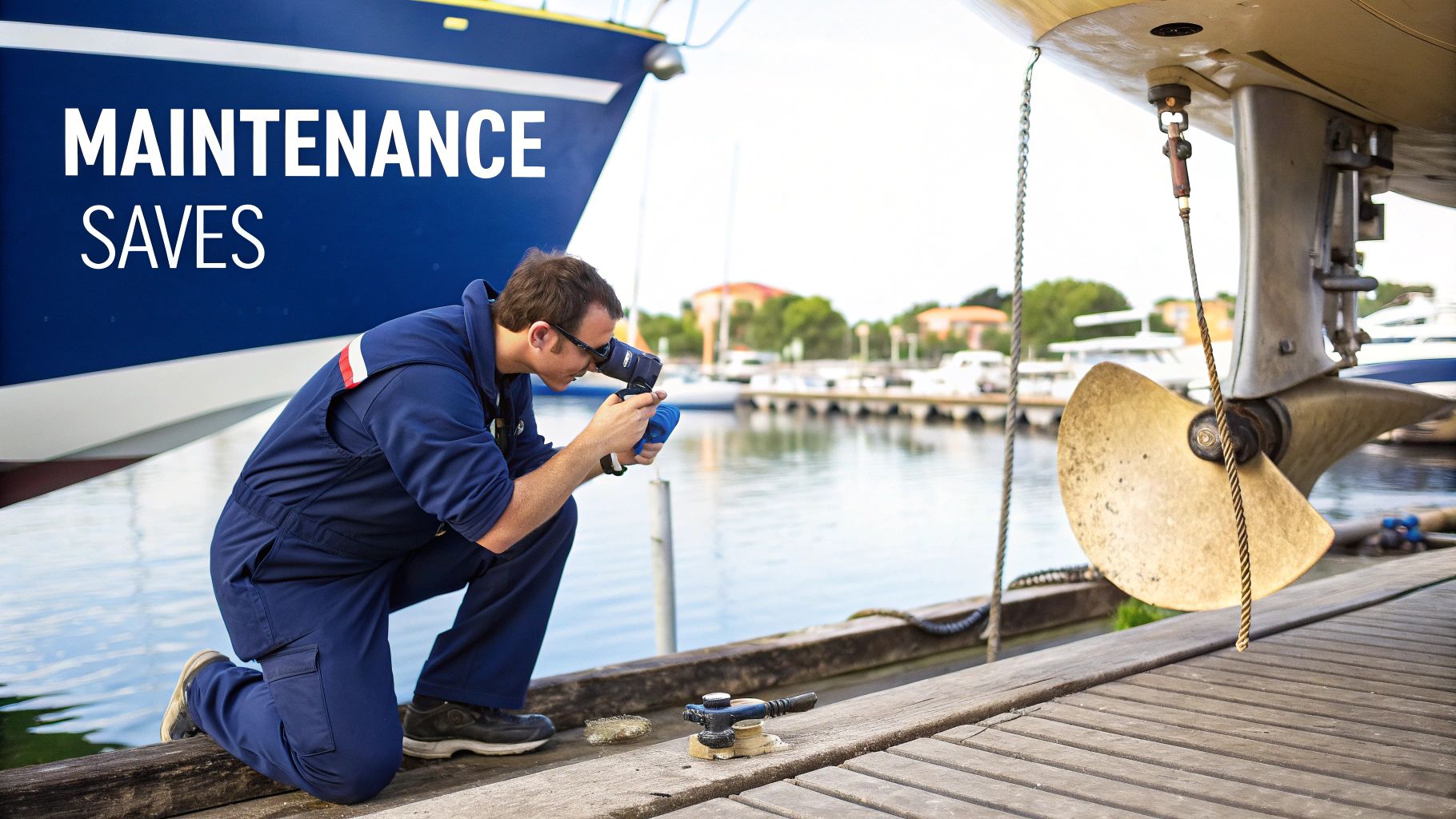 While smart operating habits are essential, modern technology provides powerful tools to shrink your boat fuel cost even further. These systems offer real-time data and automated efficiencies that were once only available to the commercial shipping industry. By adding the right tech, you can make informed decisions that lead to direct savings at the pump.
While smart operating habits are essential, modern technology provides powerful tools to shrink your boat fuel cost even further. These systems offer real-time data and automated efficiencies that were once only available to the commercial shipping industry. By adding the right tech, you can make informed decisions that lead to direct savings at the pump.
Digital Fuel Monitoring Systems
For many boaters, the most impactful investment is a digital fuel monitoring system. Think of it as a financial advisor for your fuel tank. Instead of guesstimating based on your last trip, these systems connect to your engine and show you an instant reading of your gallons per hour (GPH) burn rate.
This allows you to find your boat's most efficient cruising speed—its "sweet spot"—with incredible accuracy. You can immediately see how small adjustments to the throttle or trim affect your consumption, empowering you to make fuel-saving changes as you go.
Advanced Planning and Purchasing Tools
Technology also helps with how you plan trips and purchase fuel. Modern route planning software and GPS chartplotters now include features that help you work with nature, not against it. By analyzing current and wind forecasts, they can suggest the most fuel-efficient path, saving a surprising amount of fuel on longer journeys.
Likewise, a new generation of mobile apps helps you find the best fuel prices. This screenshot from a popular boating resource, Boats.com, shows how users can compare marina services and amenities, which often includes fuel pricing information.

Using tools like these to check prices before you arrive helps you avoid paying a premium at certain locations. Many marinas also offer loyalty programs or network discounts that are easy to miss but can add up to significant savings over a season. By pairing smart planning with real-time data, you take active control of your fuel budget.
Your Complete Boat Fuel Cost Action Plan
Now it's time to take all this knowledge and turn it into a working system that actively manages your boat fuel cost. This isn't about getting tangled in complex theories; it's about creating a simple, repeatable plan that puts you back in the captain's chair of your expenses. The goal is a framework that fits your boating life, whether you're a weekend angler or charting long-distance cruises.
Create a Seasonal Budget Framework
First, let's build a budget that moves with the seasons. Boating isn't a flat-line expense; costs spike in summer and dip in the cooler months. Your budget should reflect this natural rhythm. A straightforward way to do this is:
- Estimate Your Hours: Look back at previous seasons to get a realistic idea of how many hours you'll likely spend on the water each month.
- Calculate Baseline Cost: Take your estimated hours and multiply them by your boat's average GPH (gallons per hour). Then, multiply that number by the current local price of fuel. This gives you a starting boat fuel cost for each month.
- Add a Buffer: Life happens. Always build in a 15-20% contingency fund. This buffer is your safety net for those perfect-weather impromptu trips, unexpected detours, or sudden jumps in fuel prices.
Budgeting this way removes the stress of surprise costs and lets you focus on enjoying your time on the water.
Balance Efficiency and Enjoyment
Next, it's about making a conscious choice: when do you prioritize saving fuel, and when do you prioritize the experience? Not every outing has to be a masterclass in fuel conservation. Sometimes, the mission is to race to the best fishing spot or enjoy the thrill of pulling a waterskier across the wake.
The key is knowing the trade-offs. You understand that cruising at your boat's "sweet spot" is efficient, but you also know the cost of opening up the throttle. This knowledge gives you the power to make intentional decisions. It’s about making your fuel spending match your plan for the day, ensuring you're mastering your boat, not being controlled by its fuel appetite.
Simple Tracking for Real Results
Finally, commit to a simple tracking habit. You don't need fancy software—a small notebook in the glove box or a notes app on your phone works perfectly. After every trip, just jot down two numbers: engine hours run and gallons added. This two-minute habit provides priceless data over a season, helping you fine-tune your budget and see the real-world results of your efforts.
With a smart plan in hand, you can put fuel worries in your wake. For a truly seamless experience at the pump, consider the CLiX Fueling Solutions system. It prevents messy and expensive fuel spills by automatically shutting off the nozzle when your tank is full, making sure every drop you pay for ends up in your boat, not in the water. Learn how CLiX can protect your boat and the environment at clixfueling.com.

